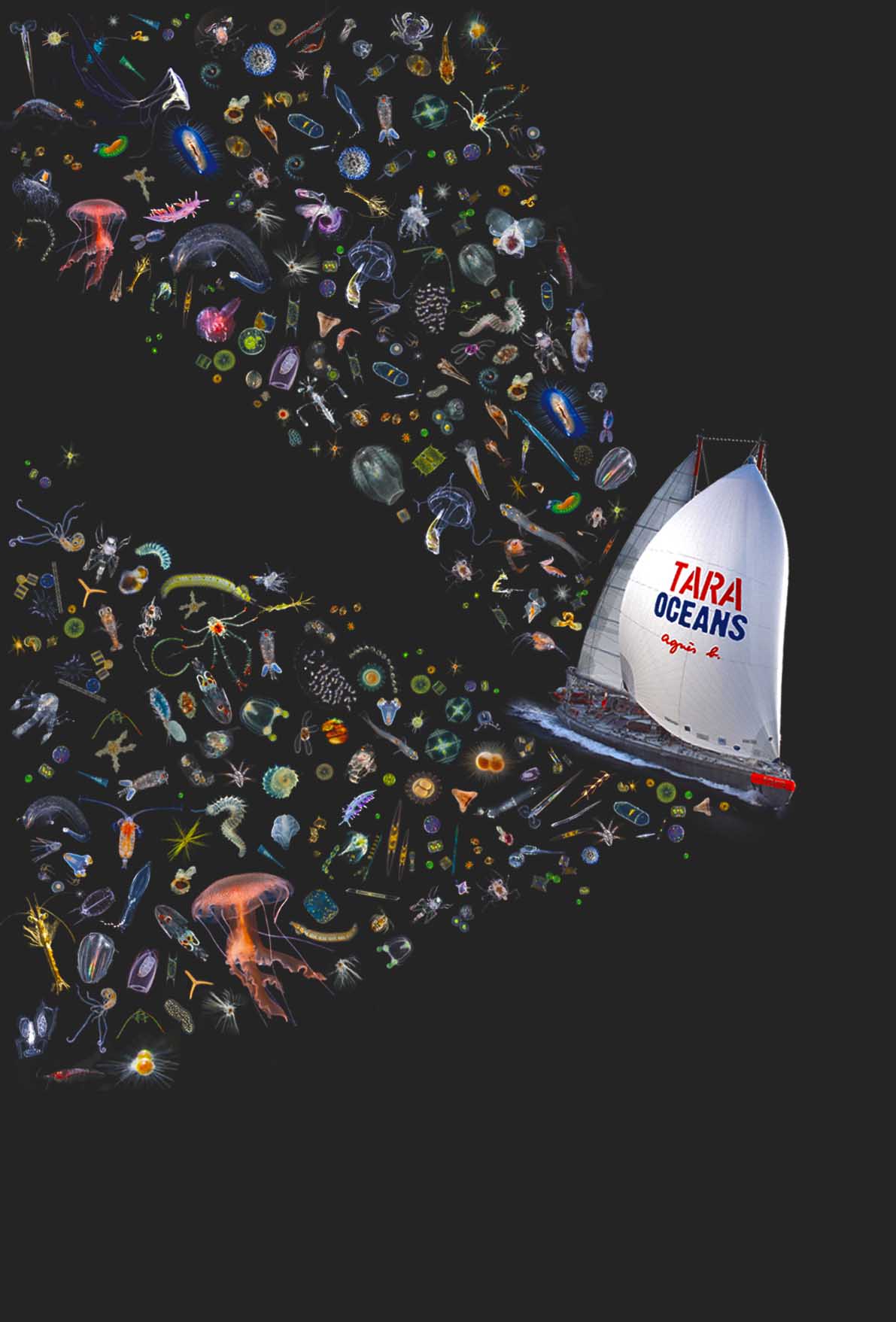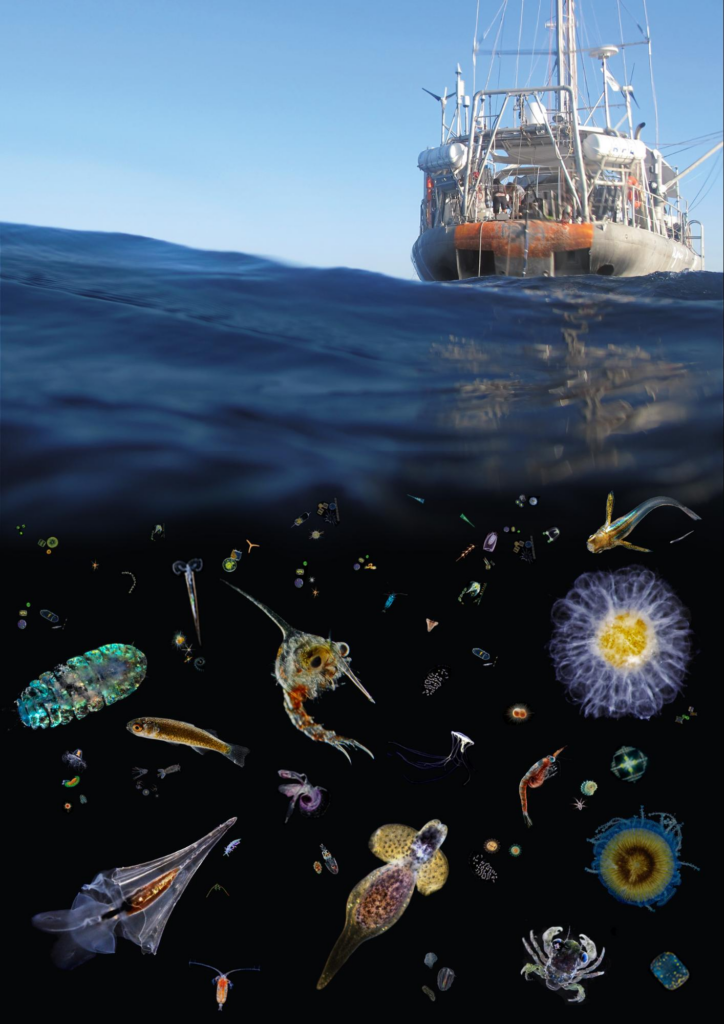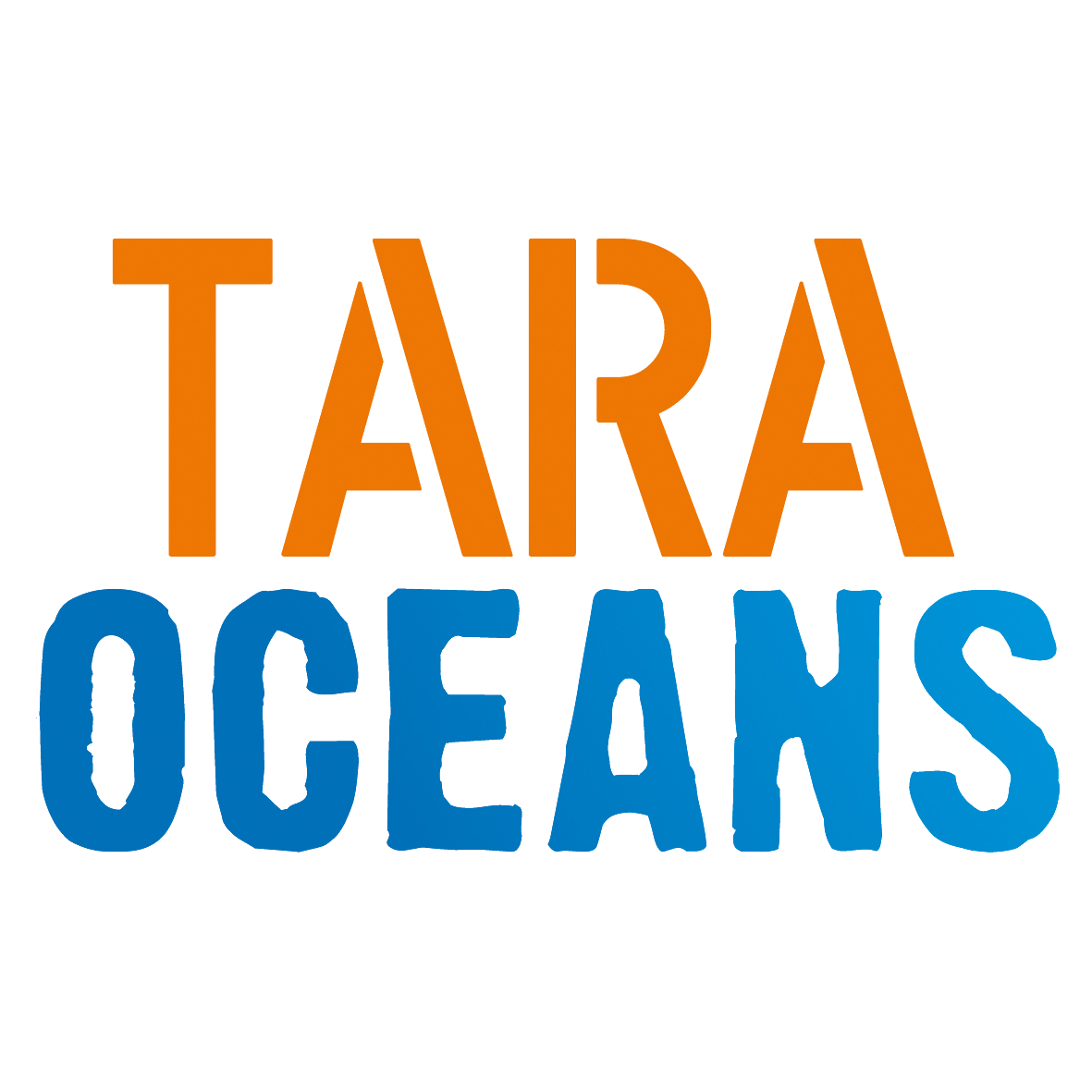
TARA OCEANS
In 2008, cell biologist and sailor Eric Karsenti assembled a multidisciplinary team to launch the Tara Oceans project, aiming to assess plankton ecosystems globally—from viruses to animals—by integrating biological and physico-chemical data. Plankton, due to their small size, high turnover, and fossil record, provide an ideal model for studying complex ecological and evolutionary systems. As the base of the oceanic food web, photosynthetic plankton are responsible for around 50% of global primary productivity, and the ocean sequesters significant amounts of atmospheric CO2.
The Tara Oceans project involved two circumglobal expeditions (Tara Oceans from 2009–2012 and TaraOceans Polar Circle from 2012–2013), systematically collecting eco-morpho-genetic data from 210 sites at three depths across most oceanic provinces. Unlike previous major oceanic surveys—the Challenger Expedition (1872–1876), the Global Ocean Survey (2003–2008), and Malaspina (2010)—Tara Oceans uniquely studied organisms spanning eight orders of magnitude in size, from viruses to fish larvae, using advanced molecular and imaging technologies.
The project collected ~40,000 standardized plankton samples along with detailed environmental data. Supported by French ‘Investissements d’Avenir’ grants, over 250 billion paired-end DNA reads (>50 Terabases of raw data) and >6 million plankton images (>30 Terabytes) were generated and analyzed using innovative multi-omics and automated imaging techniques. Data spanned 11 size fractions and >8,500 subcommunities, providing the most comprehensive, publicly available description of a planetary biome. This dataset serves as a critical reference for understanding global ecological and evolutionary processes and assessing future Earth-system changes.

